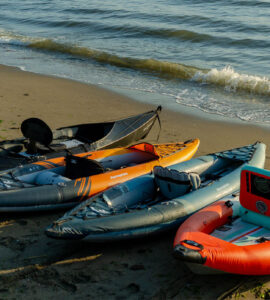 Posted On
Posted On
Deciding Factors While Choosing a Snow Jacket
 Posted On
Posted On
As you plan a trip to your favorite ski resort to enjoy the snowy days this winter, ensure you have the essential piece of clothing – a snow jacket. Snow jackets not only help you insulate, but they are waterproof too.
Thus, adding the electric blue Valdez snow jacket to your wardrobe is not only a fashion choice but a practical choice too.
The snow jackets are not only durable but lightweight, giving your ample mobility to assist all your snow activities. They allow space for ventilation which is much required to keep you breezy and comfortable.
Nevertheless, before you choose your new electric blue Valdez snow jacket, some factors will help you with the decision.
Styling Choice depending on Usage
The intensity of your winter activities will decide the type of snow jacket you choose. Your jacket choice can vary from the shell, insulated jackets, and 3-in-1 combo.
- Shell
Shell jackets offer a water-resistant outer layer with no provision for insulation. They are lightweight and easy to carry, and you can add as many layers on the inside to keep you warm.
- Insulated Jackets
Insulated jackets have provisions for insulation to add warmth. There are two types of insulation – Down insulation which is lightweight and warm, and synthetic insulation, which retains heat when wet.
- 3-in-1 Combo
The 3-in-1 combo allows you to wear the outer jacket or insulating layer separately, or you can wear them together, combining water resistance and warmth features.
Waterproofing Requirements and Ventilation
Snow jackets have a waterproofing rating to help determine their ability to keep water out. The rating can fall under the rate of 5k-30k mm, where the higher the rating more is the capacity to resist moisture.
You must also ensure that your snow jackets offer plenty of ventilation and breathability. A breathable jacket is perfect when visiting comparatively warmer climates or partaking in activities that can make you sweat.
Making Comfort a Priority
Before investing in your new snow jacket, ensure it is a comfortable fit for your body. You can bundle yourself up in some layers and then put on the jacket to test its fitting. For example, before your skiing or snowboarding trip, ensure that the jacket doesn’t restrict movements. It should allow you to do full squats, which will help you maneuver your skis and snowboards.
Making a Checklist of Additional Features
Look for weak spots in your winter jacket that allow moisture to enter. Seams and zippers are a few such weak spots. You can go for water-repellant zippers or use a storm flap to go over your zippers to give you extra protection. Snow jackets with taped seams offer more protection against moisture. Your snow jackets are taped in the following ways: critically taped, fully taped, and welded.
Critical tapes only reinforce those seams that are most likely to come in contact with moisture, whereas fully taped seams cover every stitching on your jacket. On the other hand, welded seams are fused and allow maximum protection.
In Conclusion
Before picking your new snow jacket for your next winter trip, ensure that it matches the checklist. Regardless of your planned activities this winter, make sure your wardrobe is ready with a snow jacket to prepare you for any situation.







